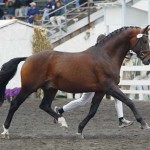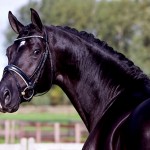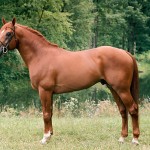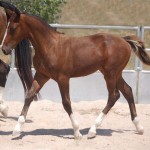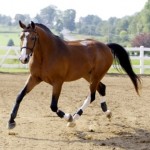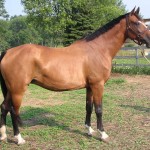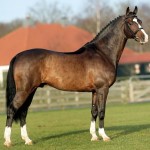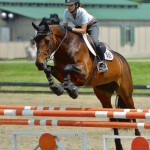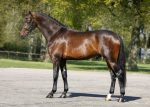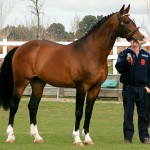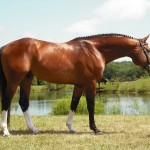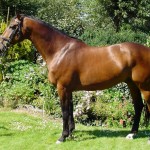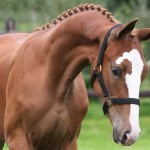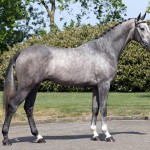Dutch Warmblood
The Dutch Warmblood is a breed of middleweight horses developed for use as a recreational and competitive horse in major equestrian disciplines including show jumping, dressage, and driving. The breed is registered with the Royal Warmblood Studbook of the Netherlands. Some of its desired traits include a well-proportioned figure, as well as a rectangular and long-lined body with an attractive appearance.
Dutch Warmblood Pictures
- Bay Dutch Warmblood
- Black Dutch Warmblood
- Chestnut Dutch Warmblood
- Dutch Warmblood Baby
- Dutch Warmblood Horse
- Dutch Warmblood Horses
- Dutch Warmblood Images
- Dutch Warmblood Jumping
- Dutch Warmblood Photos
- Dutch Warmblood Pictures
- Dutch Warmblood Stallions
- Dutch Warmblood
- Dutch Warmbloods
- Grey Dutch Warmblood
Quick Information
| Alternative Names | Dutch Riding Horse |
| Common Nicknames | WPN, KWPN |
| Temperament | Reliable, calm, intelligent, even-natured |
| Physical Characteristics | A straight outline with a well-shaped, expressive head, sloping shoulders, curved, muscular neck, long back, prominent withers, a short, flat croup, full and deep chest, strong hindquarters, and long legs |
| Colors | Grey, chestnut, brown, black, bay, and white markings are common. Tobiano patterned horses are also seen. |
| Common Use | Dressage, show jumping, driving, racing, polo |
| Life Expectancy | Around 20 years |
| Weight | Average of 1430 lbs |
| Height (size) | Stallions: 15.3 hands (155.4 cm, 61.2 inches); Mares: 15.2 hands (154.4 cm, 60.8 inches) |
| Health | Physically sound and long-lived; bone spavin, pastern arthritis, sesamoids, mild navicular changes are common; may suffer from congenital eye defects, osteochondrosis, and lack of balance or symmetry in hocks, hooves, or stifle |
| Gaited | Yes |
| Popular Traits | Good stamina, fast action, athletic ability, always in harmony with its rider, soundness, good trainability |
| Feeding/Diet | Quality pasture and hay; super fibers including soy hulls and beet pulp can be given to furnish energy |
| Blood Type | Warm |
| Country of Origin | Netherlands |
| Ancestors | Gelderlander, Groningen, Oldenburger, Thoroughbred, Selle Francais, and Holsteiner |
| Year/Time of Development | During the 1960s |
Video: Dutch Warmblood Show Jumper
History and Development
Before the Second World War era in the Netherlands, two breeds of utility horses were substantially used at the farms and in the fields. The Groningen from the north, a powerful, heavy warmblood horse related to the Friesian and the Oldenburger horses, was bred under the NWP for agricultural and light draft works. The Gelderlander from the south too was a heavy warmblood but a more elegant breed of horse that was originally bred for drawing carriages.
In the mid-20th century, the popularity of the Gelderlander, as well as the Groningen, declined considerably due to the introduction of tractors, cars, and other machinery in agriculture. As a result, specialized breeding programs through careful selection were started by the breeders. Stallions like the Holsteiner Normann and Amor, Hanoverian Eclatant, and the French-bred L’Invasion were imported to bring on some changes in the Dutch horses. During the 1960s, these breeds, including the Groningen and the Gelderlander, were crossed to produce an offspring that came to be known as the Dutch Warmblood.
In 1969, the two registries (the NWP and the Gelderlander Horse Studbook) combined to form the Warmbloed Paardenstamboek Nederland (WPN). In 1988, this national studbook organization received the Royal recognition from Queen Beatrix, and it was renamed to Koninklijk Warmbloed Paardenstamboek Nederland (KWPN).
Today the KWPN horses are divided into three different breeding directions, including the Harness type, Gelders type, and Riding type. The breeding direction of riding horses is further divided into the Jumper and Dressage types. In addition to these two types, the KWPN in North America also recognizes a third type called the Hunter type.
Interesting Facts
- The Dutch Warmbloods were adjudged first in dressage as well as in show jumping by the WBFSH in 2010.
- Some of the recent Warmblood horses to win medals in dressage at the Olympics are Udon and Ferro.
- A stallion named Moorlands Totilas, held a record for scoring the highest mark in Grand Prix Freestyle Dressage. It performed brilliantly in the 2010 FEI World Equestrian Games, winning three gold medals.
- A stallion called Uraeus played Brego in Lord of the Rings film series.
- Only the oldest Warmbloods from the Netherlands now have the lion-rampant brand since branding is now illegal by Dutch law. Instead, they are now microchipped.


